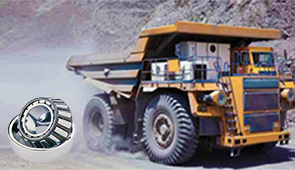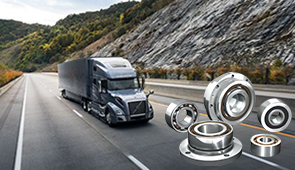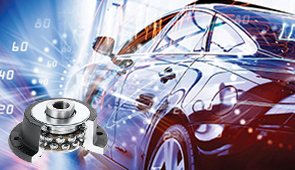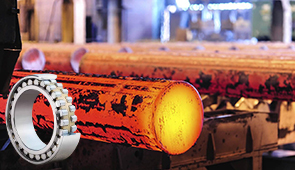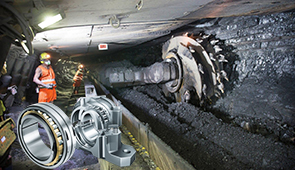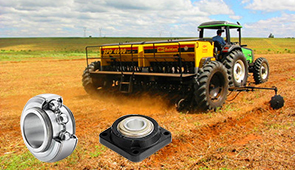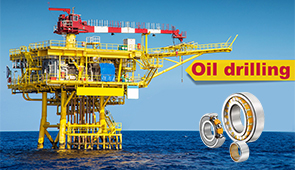Discovering the Best Quality Bearings: Your Ultimate Guide
Bearings are an integral component in countless mechanical systems, ranging from everyday household appliances to advanced industrial machinery. Their primary function is to reduce friction between moving parts, increase operational efficiency, and ensure reliability under varying loads and speeds. However, selecting the best quality bearings for your specific application can be a complex task, requiring a detailed understanding of types, materials, performance requirements, and maintenance practices. This guide aims to provide you with a comprehensive framework to identify and choose the highest-quality bearings tailored to your mechanical needs. Whether you’re a mechanical engineer, a procurement specialist, or a DIY enthusiast, this article will equip you with the technical knowledge and practical insights necessary to make informed decisions and ensure optimal performance throughout the lifespan of your machinery.
What Makes a Quality Bearing?
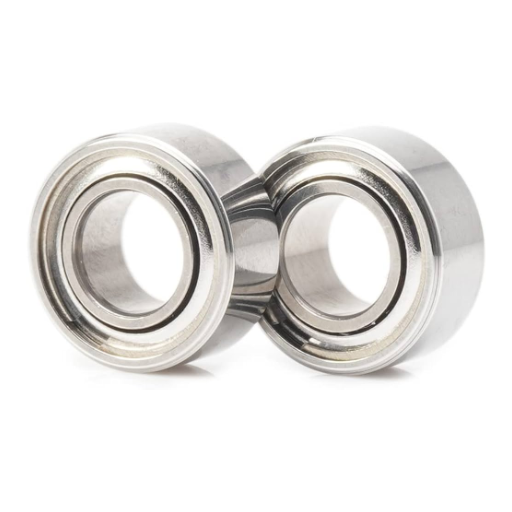
How Precision Affects Bearing Performance
The accuracy of the bearings has a direct relationship with the reduction of friction, load handling, and the stability maintained during the operational period. During the operation of high-precision bearings, there is less vibration, noise, and heat produced due to their tight tolerances, therefore having an improved efficiency and lifespan. These bearings have low operational life due to high-speed and high-load applications because even the most underrated deviations can affect performance or even cause detrimental failures.
- Dimensional Tolerance (ISO or ABEC Standards): Bearings having tighter dimensional tolerances, either ABEC-5 or ABEC-7, possess favorable alignment about runout and, hence, are beneficial in high-performance or precision-critical applications.
- Roundness and Surface Finish of Rolling Elements: Efficiency ensures perfect roundness with smoother surfaces, leading to higher precision and resulting in lesser friction and wear.
- Radial and Axial Runout: During precision manufacturing, the chances of deviations in runout are reduced, which leads to better balance and little stress on surrounding parts.
- Internal Clearance: Definable internal clearance (C2, CN, C3 ratings) subsequently improve preload and reduction of deflection in cases of different loads acting on the bearing.
Securing tight accuracy in bearings goes beyond outstanding functional capabilities; it also addresses the issues of variable loads, temperature changes, and a constantly changing operating setting. I can guarantee lesser maintenance needs alongside more dependable outcomes in essential systems with higher order function precision bearings.
The Role of Lubricant in Maintaining High Quality Bearings
Lubricants are central to the retention of functionality and preservation in high-precision parts. Their job lubricants reduce friction and prevent degradation of the material, minimize heat development, and avoid contamination, which can result in early failure of the bearing. Lubricants create a thin film for protection against metal contact, which is pertinent to the attainment of performance requirements within demanding applications.
- Viscosity: The Viscosity is a measure of motion offered by the lubricant and lubricant viscosity index (LVI) must meet predetermined operating conditions It is convenient that in high-load and low-speed when thicker (high) viscosity level is applied, it ensures adequate film strength. On the other hand, when the application is at high speed, lower viscosity level is recommended owing to lower heat generation.
- Temperature Range: Synthetic lubricants with more extreme rigidity, which comes readily available, usually perform much better in strenuous conditions, relative to gaps that they can operate in, preclude changes in composition.
- Load Carrying Capacity: Surface fatigue and wear protective needs for oils or greases subjected to heavy loads on bearings with Extreme Pressure (EP) additives have these properties.
- Compatibility: Specialized polymers have to match bearing materials and adjacent parts to eliminate any chemical damage to the lubricant and its additives.
- Cleanliness: Foreign materials should be avoided in the lubricant because they can behave as abrasive particles and hasten all forms of wear. In harsh environments, filtered lubrication systems or sealed bearings are often a requirement.
With these considerations in mind and proper re-lubrication intervals in relation to operational requirements, I am able to achieve the optimal bearing performance while significantly decreasing bearing downtime and increasing service life.
How to Shop by Category for Bearings?
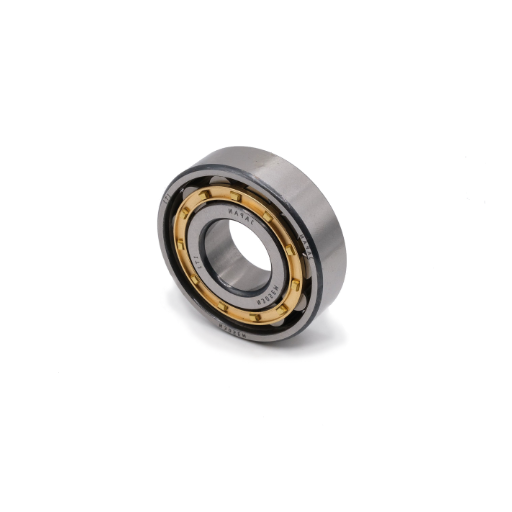
Exploring Different Product Categories
- Ball Bearings: Best suited for high-speed applications that have low friction. Significant factors are load capacities (radial or axial), operating speed range, and lubrication requirement. Generally selected for electric motors and fans as they are highly precise and efficient.
- Roller Bearings: Best suited for high radial loads. Factors to capture are load rating, diameter, and the material type. Commonly employed in industrial machinery and conveyors where durability matters most.
- Thrust Bearings: Suitable for axial load applications. Technical factors to be considered are the axial load capacity, tolerable misalignment, and geared speed. These are suitable for automotive and marine systems.
- Plain Bearings: Useful in low-speed oscillating applications. Factors to take into account are material composition, like bronze or PTFE ri,m and environmental dependant resistance, especially when exposed to dust and wet conditions in agriculture or construction machines.
With regard to all features of the categories mentioned, I will determine the most suitable bearing type in accordance with the requirements of the operation environment and engineering precision to ensure proper functionality.
Advantages of Roller Bearings and Ball Bearings
The comparison of roller and ball bearings is often reasoned on their design and the performance of their bearings in the application.
Roller Bearings:
- Load Capacity: Roller bearings have a clear advantage in applications where a high radial load needs to be supported. Their rounded or tapered lengths of cylindrical rods serve as rollers, and the contact area with which they meet the other parts as they function is wide, thus reducing pressure on parts.
- Shock and Vibration Resistance: With their strong construction and greater contact areas, roller bearings can efficiently deal with shocks and vibrations related to robust applications, as seen with various pieces of industrial equipment and construction machinery.
- Durability: They are well suited for low-speed, high-load applications because of their lower susceptibility to deformation under load.
Ball Bearings:
- Versatility: Ball bearings are associated with demanding both radial and axial load applications. Spherical rolling bearings guarantee that the parts will move smoothly at high and low speeds.
- High-Speed Performance: Ball bearings generate minimal friction and dissipate heat effectively rendering them suitable for high rotational speed applications like motors and turbines.
- Precision: They offer the most precise movement in rotation, making them the most useful for applications with strict tolerances such as robotics and aerospace.
Taking these technical considerations and features into account, I understand the operational scenario a bearing will be used in, allowing me to specify the required bearing type in order to maximize performance and machine economy.
Where to Find Featured Products in Bearings?
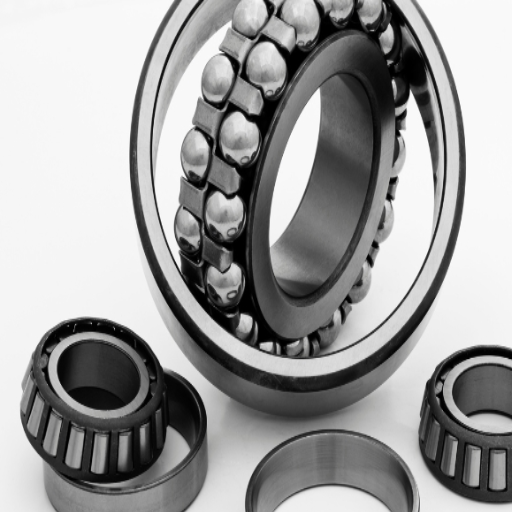
Finding the Right Radial Bearings for Your Needs
The first step I take when selecting radial bearings for certain applications is understanding their operational requirements as well as the environment the bearing will operate in. This ensures that the application and bearing type selected will work together as intended.
- Load Capacity (Dynamic and Static Load Ratings): A prerequisite to the radial bearing is that it ought to possess the necceassary forces to sustain the operational activities without economical cost of wearing or disintegrating destructively.
- Rotational Speed (RPM): A prerequisite to the radial bearing is the neceessity to work under the specified degrees of rotation.
- Temperature Range: A bearing needs to work under the expected range of low and high temperatures while considering thermal dilation and the effectiveness of the lubricant.
- Material Composition: The selection of the materials as steel, ceramic or hybrid depend on the strength of non mechanical factors, oxidation, friction and corrosion.
- Lubrication Requirements: Lubricants are vital in the life span of a bearing as well as providing the necessary separation and temperature control within and outside the system.
- Precision Class: The specification of the bearing is matched with the tolerable measurement if required, for example ABEC or ISO standards.
Evaluating these factors comprehensively gives me the confidence to determine the most suitable radial bearing for each case while guaranteeing dependability and optimal functioning.
Benefits of Spherical Bearings
Ball bearings are vital to applications with a need for high flexibility and durability under misaligned conditions. Their design compensates for the angular misalignment of shafts and housings, ensuring optimal performance with dynamic loads. Some of the key benefits include:
- Load Capacitance: Spherical bearings are capable of supporting radial and axial loads at the same time. They are ideal for heavy-duty applications.
- Self Alignment: Stress concentrations due to misalignment are minimized by the internal geometry, usually a convex outer ring and concave inner raceway. This feature is critical to minimize system wear and operational inefficiencies.
- Harsh Environment Endurance: Many spherical bearings can operate within high humidity or extreme temperature conditions because they are sealed or coated with corrosion resistant materials.
- Maintenance Savings: Advanced lubrication technology such as lifetime lubricants or self-lubricating features extend operational life while requiring minimal downtime for routine maintenance.
- High Temperature Resilience: Depending on the material selection (hydraulic oil, stainless steel, or ceramics) and lubricant specifications, spherical bearings can lift wide ranges of temperature, often from -30 to 200 degrees Celsius.
Spherical bearings are extremely useful in construction equipment, automotive suspension systems, and heavy machinery, where precision alignment and heavy-duty functionality are critical.
Advantages of Stainless Steel Bearings
Stainless steel bearings have compelling protective and economic advantages, especially in sophisticated applications necessitating prolonged usage and precision. One of the features is greatly increased corrosion resistance, which is due to the chromium in stainless steel forming a passive layer capable of mitigating oxidation and other chemical attack other stainless steels are susceptible. This makes it suitable for application in corrosive environments such as those that are humid, chemical-filled, or excessively wet.
Stainless steel bearings support extremely high strength and load as well. A certain grade of stainless steel allow high static and dynamic loading without structural failure. For example, AISI 440C stainless steel bearings have a tensile strengths of up to 1900 MPa, and therefore do not fail under mechanical loading.
In addition, depending on the lubricant used, they are also operationally efficient in a wide range of temperatures, from -20°C to 300°C. The capability of these materials to maintain their properties in extreme environments like high-speed machinery that generates a lot of heat helps guarantee consistent performance.
Due to the lower rate of wear and long life, these stainless steel bearings need less maintenance which reduces downtime and operational costs. Because of these benefits combined, stainless steel bearings are a strong candidate for precision engineering solutions in aerospace, automotive, and medical equipment sectors.
How to Identify High-Quality Bearings?

Recognizing Bearing Features That Matter
While identifying the best bearing of the bunch, crucial characteristics and metrics such as functionality, lifespan, and fit for the intended purpose must be evaluated.
- Material Composition: Bearings made out of high-grade stainless steel, ceramics, or a hybrid form are generally more immune to wear, corrosion, and high temperature, making them last longer.
- Load Capacity: Each bearing is designed in such a way that it can support certain loads without any deformation of the material or damage.
- Tolerance and Precision Standards: A sign of a high-quality bearing is its ability to have precision tolerances that enable it to work seamlessly, more so in high-speed and high precision tasks.
- Seal or Shield Design: Proper sealing enhances protection against contamination (e.g., dust, moisture), extending service life.
- Lubrication Efficiency: The type of lubricant and how it is applied greatly affects the performance and the lifespan of the bearing.
- Speed and Friction Coefficients: Bearings that are intended for high speed operations must be very accurate and have low friction, otherwise overheating is inevitable.
With these features, along with their technical circumferences, we can gauge the quality of a bearing and its application in a specific operational context.
Importance of Proper Lubricant and Grease
To maintain bearing function, accuracy, and dependability, lubrication is essential. The correct lubricant minimizes friction, moves heat away, and prevents wear or corrosion from operational conditions.
- Viscosity: For high-speed situations, low viscosity oils of 10-40 cSt at 40 degrees Celsius are optimal. For heavily loaded systems, higher viscosity oils of 90-150 cSt at 40 degrees Celsius are suitable. Viscosity should also match the operational speed and load. It is measured in centistokes (cSt).
- Temperature Range: Lubricants must be effective throughout the operational temperature range of the filter. For instance, synthetic greases used in aerospace and automotive industries commonly have -40 degrees celsius to 150 degrees celsius range.
- Load Carrying Capacity: Heavy loads are counteracted by corrosion resistant lubricants with anti-static contact and surface damage resistant extreme pressure (EP) additives.
- Corrosion Resistance: Anti-corrosion additives help protect bearing materials from wearing in wet or humid environments.
- Environmental Conditions: For usage exposed to dust and airborne contaminants, high water resistive seal fitting greases or lubricants are imperative.
To keep things running smoothly, the lubricant conditions should be checked and setting proper re-lubrication intervals should always be implemented. If lubrication is ignored, it can result to increase in wear, problems related to overheating, and ultimately loss of the bearing which would harm the overall productivity drastically.
Where to Find the Best Supplier for Quality Bearings?
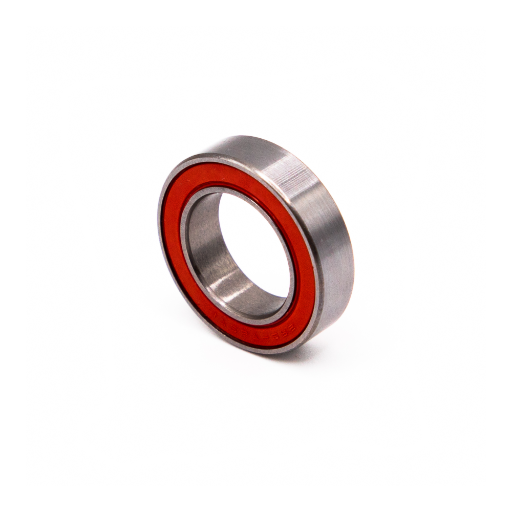
Factors to Consider in a Supplier
When it comes to selecting suppliers of quality bearings, I emphasize certain factors to guarantee dependability and productivity. The first thing I check is the product quality standards. These bearers are the frameworks that confirm best practices in the field of manufacturing. Also, a supplier’s bearings should be made from high-grade materials and precision-engineered. Those elements are important to put upon individually because a bearing’s performance under operational stress will be directly impacted.
Second, I check availability of stocked goods and whether goods can be tailored to one’s needs. A supplier should not only stock various bearings (ball bearings, roller bearings) but also be in a position to customize them as required, which may include load capacity, speed and temperature range.
Third, I check their logistical performance include lead times, reliability of shipping and availability of the supplier around the globe. Supply delays can cause interruptions in operations and these interruptions can often be dire.
Lastly, Verification of these two areas comes in after sale services. Through deep analysis of these aspects, I can choose a supplier that meets my exact technical and operational needs.
The Importance of Fast Shipping and Shipping Costs
The cost and speed of shipping are vital to the effectiveness and economy of managing supply chains. Fast Shipping protects against extensive downtime, which is essential for industries that need quick part or material replenishment. Production delays result in operational downtime, costs, and schedule delays, which will lower profit margins and customer satisfaction.
- Delivery Lead Times: A supplier’s shipping methods guarantee delivery within a given timeframe.
- Weight and Dimensional Constraints: The limit of size and height that can be shipped without incurring additional fees beyond a normal surcharge.
- Shipping Method Flexibility: The ability to ship via airmail, surface mail, or sea mail depending on the urgency and budget.
- Cost Structure Transparency: A clear outline of all costs to be incurred, including the base cost, handling fees, surcharges, and custom duties,s if any.
- Tracking and Monitoring Features: Existing real-time systems that keep track of the shipment to respond to any delays proactively.
In examining these details, businesses can assess various shipping methods objectively and strike a pleasing balance between speed, credibility, and cost.
Frequently Asked Questions (FAQs)
Q: What factors should I consider when choosing the best quality bearings for my needs?
A: When selecting the highest quality bearings, consider factors such as bearing type, brand reputation, load capacity, material, and specific application requirements like transmission or wheel use. It’s important to balance these factors with your budget to ensure the best value for your needs.
Q: How can I find the best service and price when purchasing bearings online?
A: To find the best service and price, consider shopping at a reputable online store that offers a wide variety of bearings. Look for sites that provide excellent customer service, detailed product information, and competitive pricing.
Q: Why is it important to shop by brand when purchasing bearings?
A: Shopping by brand ensures you are buying from manufacturers with a proven track record for quality and reliability.
Q: What types of bearings are best for high-load applications?
A: For high-load applications, taper roller bearings and needle roller bearings are often recommended due to their ability to handle radial and axial loads effectively.
Q: How does packaging affect the quality of bearings?
A: Proper packaging is crucial in maintaining the integrity of high-quality bearings. It protects them from contamination, moisture, and physical damage during transit. Reputable brands ensure their products are packaged securely, preserving the bearings’ performance and longevity.
Q: Are there specific bearings designed for use in transmission systems?
A: Yes, there are bearings specifically designed for transmission systems, including deep groove ball bearings and taper roller bearings. These are engineered to accommodate the unique stresses and loads found in transmission applications, ensuring smooth and efficient operation.
Q: What advantages do roller chains and belts offer in mechanical systems?
A: Roller chains and belts provide reliable power transmission in mechanical systems. They offer advantages like precise speed control, durability, and the ability to handle high loads, making them ideal for applications in automotive and industrial machinery.
UCTH213-40J-300 with Setscrew(inch)
CNSORDERNO: Normal-duty(2)
TOGN: UCTH213-40J-300
SDI: B-R1/8
SD: 2 1/2
UCTH212-39J-300 with Setscrew(inch)
CNSORDERNO: Normal-duty(2)
TOGN: UCTH212-39J-300
SDI: B-R1/8
SD: 2 7/16
UCTH212-38J-300 with Setscrew(inch)
CNSORDERNO: Normal-duty(2)
TOGN: UCTH212-38J-300
SDI: B-R1/8
SD: 2 3/8
UCTH212-36J-300 with Setscrew(inch)
CNSORDERNO: Normal-duty(2)
TOGN: UCTH212-36J-300
SDI: B-R1/8
SD: 2 1/4
UCTH211-35J-300 with Setscrew(inch)
CNSORDERNO: Normal-duty(2)
TOGN: UCTH211-35J-300
SDI: B-R1/8
SD: 2 3/16
UCTH211-34J-300 with Setscrew(inch)
CNSORDERNO: Normal-duty(2)
TOGN: UCTH211-34J-300
SDI: B-R1/8
SD: 2 1/8









